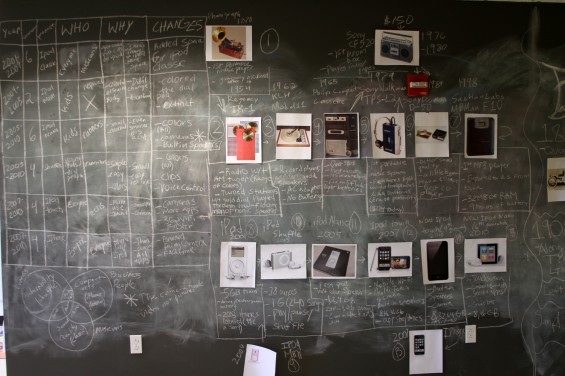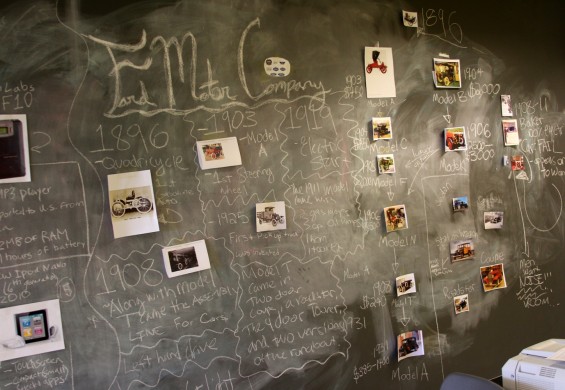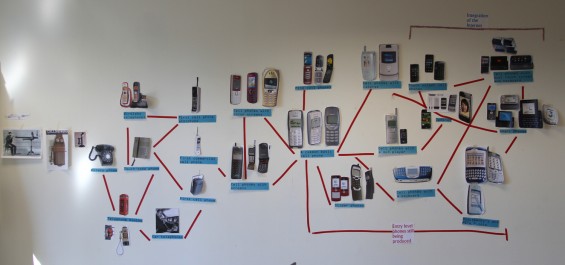
The car team focused on the early Ford models. Students were surprised to find that Ford had teamed with Thomas Edison to develop an electric car, the Baker Electric. It could travel 240 miles on a single charge, at over 20mph. It was also much quieter than contemporary gas-powered Fords. For that and other reasons Ford and Edison decided to make it a "woman's car," with built-in makeup cases, vases, plush seats and simple steering. The Baker was a commercial failurebut not a technological one. If you're in LA, you might see Jay Leno driving his around.

The phone team traced the history of the phone, focusing on newer cell phones. Again it was instinctive to think of the iPhone as the culmination of phone technologybut really there are many different kinds of phones in existence and operation, including the iconic Nokias of the late 90s, which were once fashionable but are now the workhorse cellphones for most of the world's population. They also found many phones that look like curious side-developments nowlike a goofy-looking Nokia 3 phone shaped like an angular hockey puckbut were serious contenders for "phone of the future" at the time.

Another team went all the way back to Greek mythology to find the roots of flight. They showed two different trajectories: lighter than air and heavier. They pointed out that blimps, descendants of the zeppelins, are still used today. So are propeller planes, even though they were supposedly "superseded" by jets at the end of World War II. Wars have been very good for the development of airplanes: there's no substitute for the threat of getting shot down to figure out what kind of a plane you really want.

The computer team also was able to show how different groups and demands for technologies shaped the development of the personal computer, by focusing on Apple. Fashion, features, size, and power have appealed to different groups at different times.
:rotate(0)/p39f1jed4mgd288myquiu5yecweg)